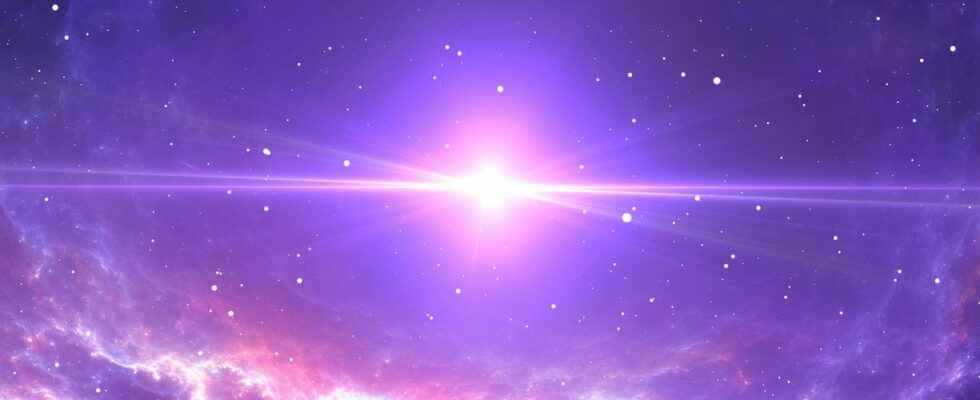Back in images on its evolution between 1987 and 2019. At the rate of four years per second, this NASA video shows the explosion of the supernova which occurred 35 years ago, in 1987. Given its distance from Earth, these events actually happened 168,000 years ago. The dying star first expelled the ring of matter (shown in red). 20,000 later, it exploded: this is the flash observed in 1987. The material ejected at high speed, followed by the telescope, has now hit the ring. This shock wave heats the material, which consequently becomes very luminous.
In this simulation in three dimensions carried out by the Nasawe can see what happened in the environment very close to the supernova 1987A since its explosion, observed on Earth on February 24, 1987. This cosmic event, whose power exceeded that of 100 million suns for several months, took place in our galactic neighborhood, at some 168,000 light years of us, within the Large Magellanic Cloud. We have therefore seen it occur with a slight delay of 168,000 years…
SN1987A was the supernova the closest visible to humanity for several centuries. A lot of’astrophysicists would be able to realize their dreams: to study what happens in these extreme conditions during the months and years that follow this phenomenon. Hubble for example, has not missed a beat since 1991, joined 10 years later by Chandra. More recently, Alma has made a contribution. And a lot has happened in 30 years…
When the crown ignites
Before thestar explodes, a ring of gas of about a light year already encircles it. It is made up of the material ejected by the red giant dying for more than 20 millennia, according to researchers. Then after thecollapse of the star, the shattering breath which was released quickly catches up with the cloud created by the “pre-supernova”. Thus, throughout the past 30 years, researchers have been able to see the gradual burning of this crown as the winds swept over her. What will happen next, the researchers still do not know because it will depend on several factors such as the density of this ring. In the center, observations have shown that the structure has diluted at a speed of around 32 million km/h.
The shock wave, meanwhile, continues to spread through the vast molecular cloud where the original star was born. The material it is going to compress will in turn bud in stars, and large amounts of the elements that were forged in the explosion will enrich the matrix. New suns and their planets will appear in a few million years.
© Nasa
Interested in what you just read?
